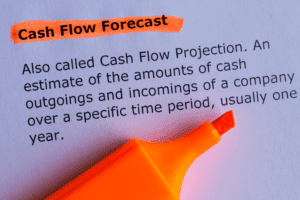Incremental Cost: Definition, How to Calculate, and Examples

Effective management of materials, such as bulk purchasing or supplier negotiations, can lead to cost savings and improved profitability. The components of incremental manufacturing cost typically include direct materials, direct labor, and variable overhead. Direct materials, such as raw inputs like steel or plastic, increase proportionally with production. Similarly, direct labor costs rise as more workers or additional hours https://www.bookstime.com/articles/net-realizable-value are required for higher production demands.
Indirect labour costs

Sensitivity analysis and assumptions play a crucial role in the process of calculating and comparing the incremental costs and benefits of different options. In this section, we will delve into the various aspects of sensitivity analysis and the importance of making reasonable assumptions. Remember, incremental costs are context-specific, and thorough analysis ensures informed decision-making. Whether you’re optimizing business processes, designing public policies, or improving patient care, understanding incremental costs empowers you to navigate complex choices effectively.
- Incremental cost is calculated by analyzing the additional expenses involved in the production process, such as raw materials, for one additional unit of production.
- It allows businesses to assess the impact of a specific action or decision on their overall costs and profitability.
- If we look at our above example, the primary user is product ‘X’ which was already being manufactured at the plant and utilizing the machinery and equipment.
- Imagine an e-commerce platform adjusting ad spending based on incremental conversion rates.
- In other words, when output increases, the average cost per unit decreases.
How to Calculate Incremental Cost
Incremental cost specifically tells business owners about the worthiness of allocating additional resources for a new production volume. Economies of scale show that companies with efficient and high production capacity can lower their costs, but this is not always the case. Some ventures waste time and resources, and calculating the incremental cost versus projected sales at a particular volume avoids that. But then you are looking at making 5,000 more shirts as your labor, machinery, and production input tells you you can. The cost of producing 15,000 units is $120,000, meaning the additional cost to expand your production to this level is at an incremental cost of $20,000. It has lowered as some of your fixed costs have already been covered by your normal production volume.
What is an incremental cost?
- Understanding the scope of manufacturing overhead costs is vital in ensuring accurate product costing.
- By exploring different perspectives, we can gain valuable insights into the significance and impact of incremental cost analysis in decision-making processes.
- In the realm of business, the strategic alignment of products can be a transformative force,…
- This financial metric helps companies determine the additional costs incurred when increasing production levels, providing insights into operational decision-making.
- Sensitivity analysis can further evaluate how changes in production impact costs, enabling data-driven decision-making.
If the LRIC rises, it is likely that a corporation will boost product pricing to meet the costs; the inverse is also true. Forecast LRIC is visible on the income statement, where revenues, cost of goods sold, and operational expenses will be altered, affecting the company’s total long-term profitability. Companies utilize incremental revenue as a comparative measure with their baseline revenue level to calculate their return on investment. They may then determine how much money they can afford to spend on marketing efforts and how much sales volume is required to generate a profit for the company. It simply divides the change in costs by the change in quantity produced to determine the incremental cost. When making short-term decisions or selecting between two possibilities, such as whether to accept a special order, incremental costs are important.
Incremental and marginal costs
This allows individuals and organizations to assess the value and feasibility of each option before making a final choice. In this section, we will delve into the intricacies of comparing benefits and costs, providing insights from various perspectives. The company must weigh these incremental costs against the projected revenue from the new product line to decide whether bookkeeping it’s a profitable venture.

Variable Overhead

It excludes incremental cost fixed overhead costs that don’t fluctuate with short-term changes in output. Leveraging technology to manage manufacturing overhead costs completely transforms how manufacturers handle indirect expenses. Real-time tracking ensures transparency and accuracy in cost allocation, while advanced reporting tools provide actionable insights for informed decision-making. An incremental cost is the difference in total costs as the result of a change in some activity. Incremental costs are also referred to as the differential costs and they may be the relevant costs for certain short run decisions involving two alternatives. Getting all relevant information about your operational expenses lets you know whether you are in the right financial state to cover additional production costs before starting any project.
Applications in Business Decision-Making

Economies of scale occurs when increasing production leads to lower costs since the costs are spread out over a larger number of goods being produced. The fixed costs dont usually change when incremental costs are added, meaning the cost of the equipment doesnt fluctuate with production volumes. Understanding incremental costs can help a company improve its efficiency and save money.
They need to compare the additional costs (advertising, discounts, and staff overtime) against the incremental benefits (increased footfall, sales, and brand visibility). In summary, while incremental costing provides valuable insights, decision-makers must recognize its limitations. Combining it with other decision tools and considering a holistic view ensures better-informed choices. Remember, every decision involves trade-offs, and understanding these limitations enhances our decision-making process.
The Advantages of Incremental Cost Analysis
If a reduced price is established for a special order, then it’s critical that the revenue received from the special order at least covers the incremental costs. Ultimately, a thorough understanding of incremental cost empowers businesses to make well-informed decisions that can positively impact their bottom line. If a reduced price is established for a special order, then its critical that the revenue received from the special order at least covers the incremental costs. Incremental costs are additional expenses a business spends to expand production. It is the total amount of money paid for producing an additional unit of a product.